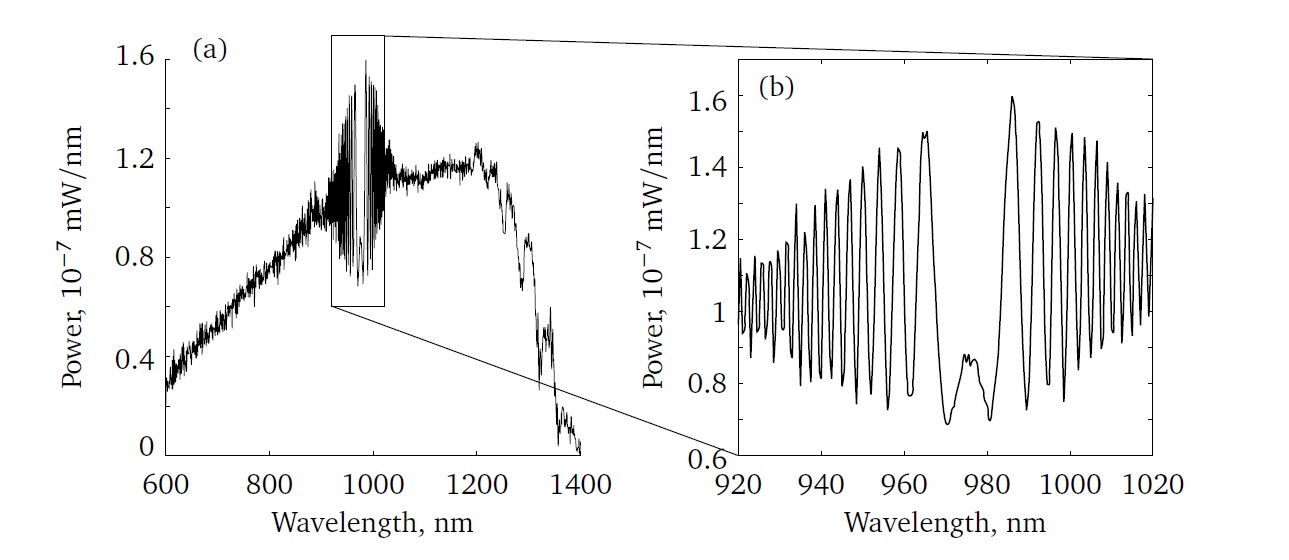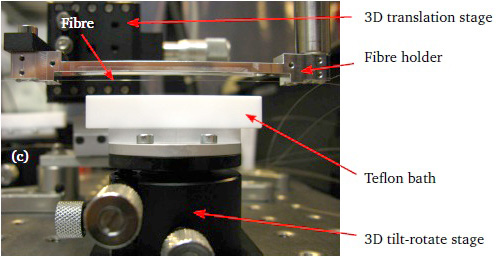One possible application of optical microfibers (OMF) is as interferometers used for dispersive sensing. In a single-optical microfiber modal interferometer (SOMMI, as seen in figure below), two transverse modes are excited in the down-taper and recombined in the up-taper, giving a Mach-Zehnder-like interferometer configuration. However, the two interferometer arms of the SOMMI share the same optical path (the fiber waist), making it relatively robust with respect to mechanical fluctuations. In the waist, the two transverse modes have a different fraction of their power in the evanescent field, which means that they interact to a different degree with a surrounding medium or surface-adsorbed molecules. The resulting differential phase shift is read out by the interferometer. This non-absorptive sensing is useful for refractive index measurements (refractometry) and for non-destructive measurements on light-sensitive objects, such as photochromic organic molecules.

Fig. 1: Mode splitting occurs at the down-taper of the OMF followed propagation in the waist and interference of the modes in the up-taper.
To achieve this, the fiber tapers should be made non-adiabatic, unlike in most other cases of OMFs optimizes for high optical transmission.
Several spectral interferometric measurements have been performed with OMF samples in air and immersed in liquids. An example setup and its results are shown below for white-light interferometry.

Fig. 2: Spectral interferometry setup.

Fig. 3: Measured spectral response of a SOMMI. Interference fringes can be observed between 920-1020 nm (inset).
The resulting interference fringes show a distinct zero-frequency point, roughly around 975 nm, called the achromatic fringe. With this characteristic achromatic fringe, SOMMIs serve as a promising tool for absolute refractive index measurements. In further interferometric experiments done in liquids (photos of setup seen below), a sensitivity of 3000 to 4000 nm per refractive index unit was measured. This is the highest sensitivity observed in non-birefringent OMF-based sensors so far. More information can be found in the PhD thesis of Konstantin Karapetyan.

Fig. 4: Photos of liquid interferometry setup. The fibre sample can be immersed into the Teflon bath which holds the liquid of interest. Both baths and fibre holders are aligned using rotational and translational stages.The fibre can be seen underneath the holder.









